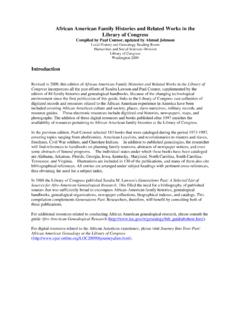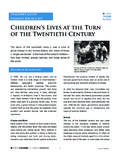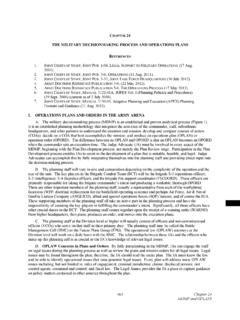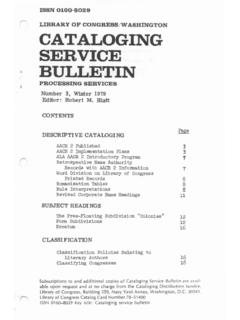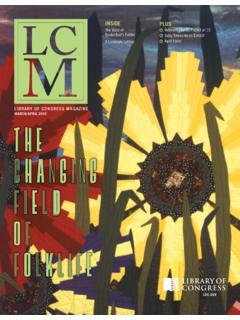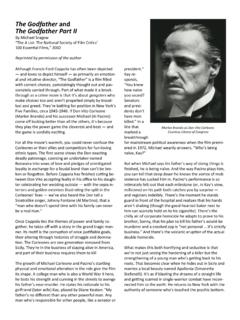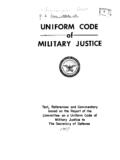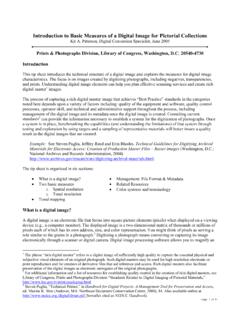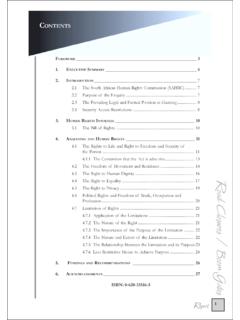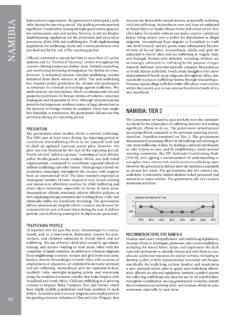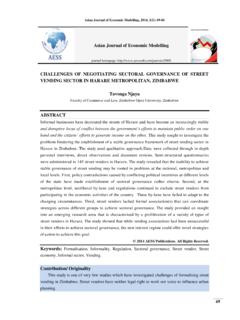Transcription of Jim Crow and Segregation - Library of Congress
1 The bus station in Durham, North s guideprimary source setJim crow and SegregationFor more than a century after the Civil War, a system of laws and practices denied full freedom and citizenship to african Americans, segregating nearly all aspects of public BackgroundIn 1863, the Emancipation Proclamation symbolically established a national intent to eradicate slavery in the United States. Decades of state and federal legislation around civil rights followed. In January of 1865, the 13th amendment to the Constitution officially abolished slavery in this country, while the 14th amendment, passed in 1866, set forth three principles: All persons born or naturalized in the werecitizens for the nation and no state could makeor enforce any law that would abridge theirrights of citizenship.
2 No state could deny any person of life, liberty,or property without due process of law. No state could deny any person equal protectionof the , the 15th amendment, passed in 1869, outlawed the denial of voting rights due to race, color, or past servitude. However, immediately after the Civil War ended, some states began imposing restrictions on the daily lives of african Americans, whether they were survivors of slavery or had always been free. By the end of the 19th century, laws or informal practices that required that african Americans be segregated from whites were often called Jim crow practices, believed to be a reference to a minstrel-show song, Jump Jim crow .
3 With the Compromise of 1877, political power was returned to Southern whites in nearly every state of the former Confederacy. The federal government abandoned attempts to enforce the 14th and 15th amendments in many parts of the country. By 1890, when Mississippi added a disfranchisement provision to its state constitution, the legalization of Jim crow had begun. Jim crow was not enacted as a universal, written law of the land. Instead, a patchwork of state and local laws, codes, and agreements enforced Segregation to different degrees and in different ways across the nation. In many towns and cities, ordinances designated white and black neighborhoods, while in others covenants and unwritten agreements real estate interests maintained residential Segregation .
4 african Americans were denied the right to vote by onerous poll taxes, unfairly applied tests, and other unjust barriers. The signs we associate today with Jim crow Whites Only, Colored appeared at bus stations, water fountains and rest rooms, as well as at the entrances and exits to public buildings. Hotels, movie theaters, arenas, night clubs, restaurants, churches, hospitals, and schools were segregated, and interracial marriages outlawed. Segregation was not limited to african Americans, but often applied to other non-white was often maintained by uniformed law enforcement.
5 In other instances, it was enforced by armed white mobs and violent attacks by anonymous vigilantes. african Americans resisted these pervasive restrictions using many different strategies, from public advocacy and political activism to individual self-defense and attempts to escape to a better life. In the century following the end of Reconstruction, millions of african Americans moved away from the South in what became known as the Great Migration, only to discover that they faced discrimination in the northern states. In the middle of the twentieth century, generations of resistance to segregationculminated in the Civil Rights movement, in which african Americans launched widespread demonstrations and other public protests to demand the rights and protections provided by the Constitution.
6 As a result, a series of landmark court cases and new legislation in the 1950s and 60s, including the Civil Rights Act of 1964 and the Voting Rights Act of 1965, relegated many of the Jim crow laws and practices of the previous century to the dustbin of history. The impact of a century of Segregation can still be felt today, and, although the specific Segregation policies of the 19th and 20th centuries have been discredited, voices calling for equal rights for all can still be heard rights march on Washington, for TeachersSelect one primary source that reflects racial Segregation and ask your students to consider Segregation from multiple perspectives.
7 How would they react if they were excluded? How would they feel if they were not excluded? What would they do if they were asked to enforce the rule or law? Ask students to analyze several primary sources that express or illustrate views in favor of Jim crow Segregation . What are some of the ways that proponents of Segregation make it sound like a benefit -- either to whites, to african Americans, or to both? Invite them to explore what is meant by the term separate but equal. and how is this concept related to the arguments? Ask students to compare and contrast several primary sources that express or illustrate opposition to Jim crow Segregation .
8 What were some of the different justifications given for abolishing Jim crow ? What different methods or approaches of opposition can you identify? Brainstorm other forms of protest not shown in the primary sources and look for examples in either historical collections or the media of Resources With and Even Hand : Brown v. Board at of Signs Enforcing Racial American Photos for the Paris Exposition of 1900 Rights Act of 1964: A Long Struggle for Sources with CitationsDeming, Leonard. Jim crow . Song sheet. Boston: L. Deming, From Library of Congress , America Singing: Nineteenth-Century Song Sheets.
9 To Ride in City Railway Passenger Cars! Broadside. Philadelphia: 1868. From Library of Congress , An American Time Capsule: Three Centuries of Broadsides and Other Printed Ephemera. United States Congress . An Act to Protect All Citizens in their Civil and Legal Rights. Statutes at Large. 43rd Congress , 2nd Session, Volume 18, Part 3. 1 March 1875. From Library of Congress , A Century of Lawmaking for a New Nation: Congressional Documents and Debates, bin/ampage?collId=llsl&fileName=022 , Booker T. Atlanta Exposition Speech, September 18, 1895. Manuscript. From Library of Congress , african American States Census office.
10 Statistical atlas of the United States, based upon the results of the eleventh census. Map. Washington: Govt. print. off., 1898. From Library of Congress , Geography and Map the Colored Men of Voting Age in the Southern States. Philadelphia: Press of Wright, [190-?]. From Library of Congress , From Slavery to Freedom: The african -American Pamphlet Collection, 1824-1909. :@ Brooks, Walter H., The Jim crow Car. Richmond Planet. 15 September 1900. From Library of Congress , Chronicling America: Historic American 5 Hall, Chas. E. Prof. William under the 'Jim crow ' law, The Appeal. 12 November 1904.
